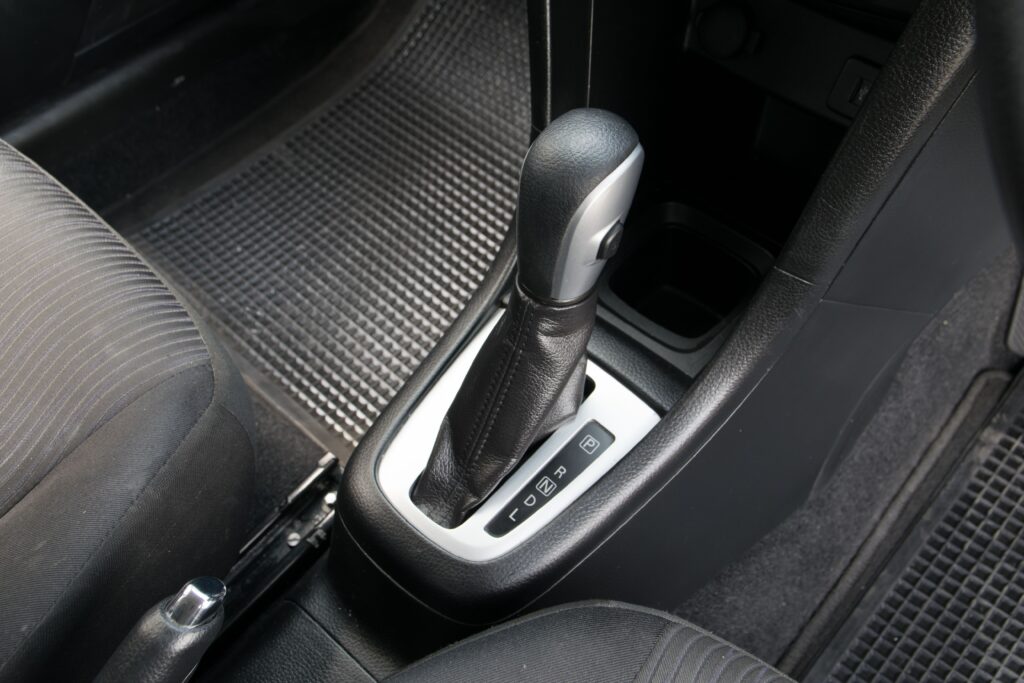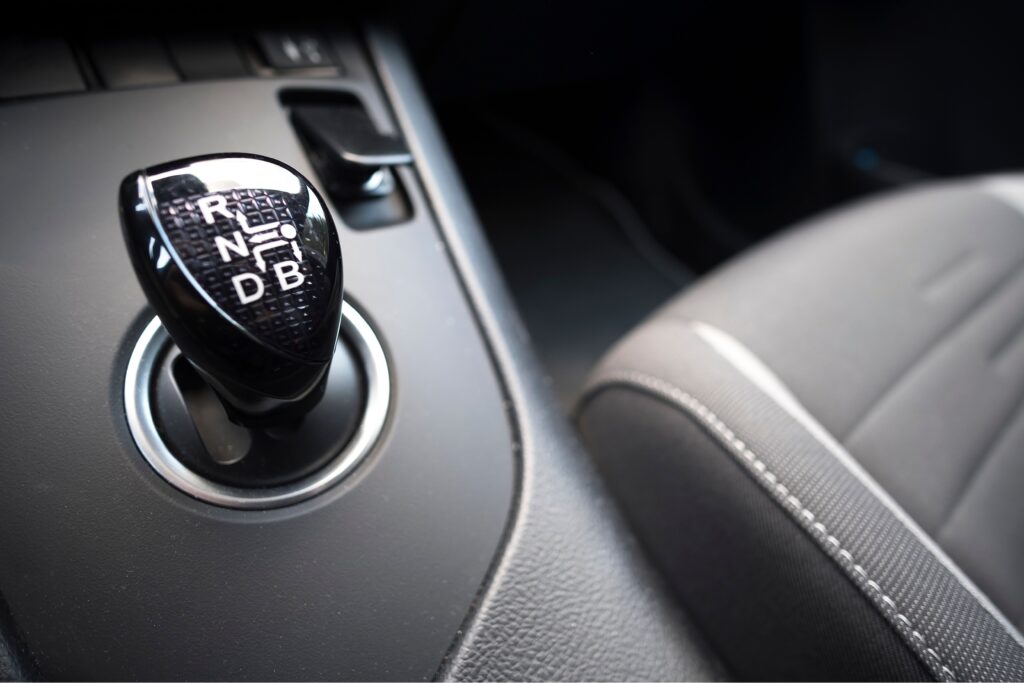Semi Truck Transmission Types
The best truck transmission types the one that fits you. Old school drivers tend to like the control of shifting, the more gears the better. Technology has advanced to the point that performance wise the difference is minimal. The best truck transmissions the one you are comfortable with.

Semi truck transmissions play a crucial role in the operation and performance of these mighty vehicles that traverse our highways.
Transmissions are responsible for transferring power generated by the engine to the wheels, allowing the truck to move forward efficiently. They serve as the intermediary between the engine and tires, enabling drivers to control speed, navigate various terrains, and haul heavy loads effectively.
There are several types of semi truck transmissions available in the market today, each offering unique advantages and functionalities. Manual transmissions, also known as stick shift or standard transmissions, have been a staple in the trucking industry for decades.
With a manual transmission, drivers have full control over gear shifting, utilizing a clutch pedal to engage and disengage gears manually. Manual transmissions provide several benefits to drivers.
They allow for precise gear selection, making it ideal for applications that require constant gear changes like climbing steep inclines or navigating tight corners. Additionally, manual transmissions are generally more durable and cost-effective compared to other types of transmissions due to their simpler design and fewer components.
While manual transmission remains popular among seasoned truckers who appreciate its versatility and control, technological advancements have led to the emergence of automated manual transmissions (AMTs). These innovative systems combine elements of both manual and automatic transmission technologies.
AMTs offer an enhanced driving experience by incorporating electronics and computer-controlled actuators that automate gear shifts while retaining some level of driver input. By automating shifting operations based on road speed, engine load, and other factors monitored by sensors in real-time, AMTs optimize fuel efficiency while reducing driver fatigue.
Automatic transmissions represent another major category seen in semi trucks today. Unlike manual or AMT systems that require driver intervention during gear changes manually or electronically respectivelytly, automatic transmissions shift gears automatically without any direct input from the driver.
Utilizing hydraulic torque converters or dual-clutch mechanisms paired with complex electronic controls, these systems seamlessly adjust gears based on speed and throttle inputs. The convenience of automatic transmissions cannot be understated.
They eliminate the need for manual gear engagement, allowing drivers to focus solely on steering and other aspects of driving. Automatic transmissions are especially useful in urban or congested areas where constant stop-and-go traffic demands frequent gear changes.
Additionally, they are highly preferred by novice drivers or those who prefer a more relaxed driving experience. Overall, semi truck transmissions have evolved significantly over the years, catering to the diverse needs and preferences of truckers worldwide.
Whether it’s the mechanical control of manual transmissions, the seamless automation of AMTs, or the effortless shifting offered by automatic transmissions, each system has its distinct advantages and appeals to various types of drivers. In subsequent sections, we will delve deeper into each type of transmission – exploring their intricate workings, benefits, and considerations – to provide a comprehensive understanding and assist you in making educated decisions when it comes to selecting a transmission that best suits your needs as a trucker.
Manual Transmission

Manual Transmissions are widely used in semi trucks due to their ruggedness, reliability, and driver control. These transmissions require the driver to manually engage the gears by clutching and shifting gears using a gearshift lever.
in semi trucks typically have 10 to 18 forward gears, allowing for a wide range of speed ratios to accommodate different road conditions and load requirements. One key advantage of manual transmissions is their efficiency.
By manually selecting the appropriate gear for each driving situation, drivers can optimize the truck’s power delivery, ensuring that the engine operates at its most efficient RPM range. This not only maximizes fuel economy but also contributes to better overall performance.
Additionally, manual transmissions provide drivers with greater control over their vehicle. The ability to manually shift gears allows for precise maneuvering in challenging driving conditions such as steep inclines or rough terrains.
Drivers can downshift to utilize engine braking effectively, reducing strain on the braking system and enhancing safety during descents. Furthermore, manual transmissions offer ease of maintenance and repair compared to more complex transmission systems.
In case of any issues or failures, these transmissions can often be repaired on-site or at local repair shops without requiring specialized equipment or expertise. Despite their advantages, manual transmissions do require more skill from drivers due to the need for frequent shifting and clutch manipulation.
This can be physically demanding during long-haul journeys and may contribute to driver fatigue over time. Nevertheless, many experienced truckers appreciate the tactile engagement offered by manual transmissions and consider it an essential element of their profession.
Manual transmissions continue to be a popular choice among semi truck drivers due to their reliability, efficiency, and driver control advantages. While they may demand more skill from operators compared to automatic counterparts, these transmissions offer robustness and versatility that make them well-suited for various road conditions and load requirements encountered in long-haul trucking operations.
Automated Manual Transmission (AMT)

Automated Manual Transmissions have gained significant popularity in the commercial trucking industry due to their ability to combine the efficiency of manual transmissions with the convenience of automatic transmissions.
AMTs are essentially manual transmissions equipped with an electronic control system that automates the shifting process. This allows for smoother gear changes and eliminates the need for a clutch pedal, making it easier for drivers to operate.
One of the key advantages of AMTs is their adaptability to different driving conditions. The electronic control system continuously monitors various parameters such as vehicle speed, engine load, and driver input, and adjusts gear selection accordingly.
For instance, when climbing a steep incline or towing heavy loads, AMTs can downshift automatically to deliver more torque and power. Conversely, when driving on flat terrain or during highway cruising, AMTs can upshift to improve fuel efficiency by reducing engine RPM.
Additionally, AMTs offer additional safety features compared to traditional manual transmissions. With advanced sensors and algorithms in place, these systems prevent harmful practices such as over-revving the engine or engaging inappropriate gears that could potentially cause damage or accidents.
Moreover, some AMT models incorporate features like hill-start assist that prevent vehicles from rolling back on uphill starts by automatically engaging the brakes until the driver applies throttle pressure. Overall, Automated Manual Transmissions provide a seamless driving experience while retaining fuel efficiency and reliability similar to that of manual transmissions.
By automating gear changes based on real-time data analysis and incorporating safety mechanisms, AMTs have revolutionized long-haul trucking by enhancing driver comfort and reducing fatigue without compromising performance or efficiency. Their widespread adoption in recent years is a testament to their value in improving productivity within the semi truck industry while prioritizing safety on our roads.
Automatic Transmission

When it comes to semi truck transmissions, automatic transmissions have become increasingly popular due to their ease of use and convenience.
are designed to shift gears automatically, allowing the driver to focus more on other aspects of driving without the need for manual gear shifting. Let’s delve into the inner workings and benefits of automatic transmissions in semi trucks.
One crucial component of an automatic transmission is the torque converter. The torque converter serves as a fluid coupling that transfers engine power to the transmission and allows seamless gear shifts.
It consists of three main elements: the impeller, turbine, and stator. The impeller is connected to the engine crankshaft and drives transmission fluid onto the turbine.
As the fluid flows, it causes rotation in the turbine, which then transmits power through a series of gears within the transmission system. The stator plays a vital role in redirecting fluid flow for efficient torque multiplication.
also employ a set of planetary gear sets that allow for various gear ratios while maintaining smooth transitions between them. Planetary gears consist of a sun gear at its center surrounded by multiple planet gears meshing with an outer ring known as a ring gear or annulus.
Depending on which elements are held stationary or allowed to rotate, different gear ratios can be achieved. Additionally, modern automatic transmissions feature advanced control systems that utilize sensors and algorithms to optimize shifting performance based on driving conditions.
These systems monitor factors such as vehicle speed, throttle position, engine load, and even road grade to determine when to shift gears for optimal efficiency and performance. The benefits of automatic transmissions in semi trucks are manifold.
Firstly, they simplify operation for drivers who may not be accustomed to manual shifting or prefer a more straightforward driving experience. This ease of use can lead to reduced driver fatigue over long distances or during heavy traffic situations.
Moreover, automatic transmissions contribute significantly to fuel efficiency by selecting optimal gear ratios based on real-time data from various sensors. They ensure smoother gear changes, reducing power loss and improving overall drivability.
Additionally, automatic transmissions can enhance vehicle control and safety by allowing the driver to focus more on steering and road conditions rather than worrying about gear selection. Automatic transmissions have revolutionized the world of semi truck driving by offering convenience, efficiency, and improved performance.
With their intricate torque converters, planetary gear sets, and advanced control systems, these transmissions provide a seamless driving experience while optimizing fuel consumption. Whether it’s for truckers new to manual shifting or those seeking enhanced comfort during long hauls, automatic transmissions are an invaluable asset in the realm of semi truck transportation.
Continuous Variable Transmission (CVT)

A continuous variable transmission (CVT) is an increasingly popular type of transmission used in semi trucks. Unlike traditional transmissions that feature fixed gear ratios, CVTs offer a seamless and continuous range of gear ratios, allowing for smoother acceleration and improved fuel efficiency.
CVTs use a system of pulleys and belts or chains to vary the gear ratio based on the engine speed and load requirements. One significant advantage of CVTs in semi trucks is their ability to optimize engine power delivery at any given speed.
In a conventional transmission, shifting gears can cause interruptions in power flow, leading to a loss of momentum. With a CVT, there are no discrete gear changes; instead, the transmission adjusts the pulley or belt positions continuously to match the desired output torque.
This results in an uninterrupted power flow from the engine to the wheels, enabling smoother acceleration and enhanced driving experience. Moreover, CVTs are highly efficient in terms of fuel consumption.
By continuously adjusting gear ratios based on driving conditions and load demands, they can keep the engine operating at its optimum RPM range more consistently than traditional transmissions. This not only improves fuel efficiency but also reduces engine wear and tear over time.
Additionally, since CVTs offer precise control over gear ratios without needing multiple gears like manual or automatic transmissions, they can be lighter weight compared to other options while still delivering comparable performance. Continuous Variable Transmissions (CVTs) have revolutionized semi truck transmissions by providing seamless gear ratio adjustments for improved acceleration and fuel efficiency.
Their ability to maintain consistent power delivery without discrete shifts offers advantages such as uninterrupted momentum during acceleration while optimizing engine performance at varying speeds. The constantly adjustable nature of CVTs allows them to tailor their output precisely according to load demands resulting in enhanced driving experiences for truck drivers as well as reduced fuel consumption and wear on the engine system overall.
Conclusion
Semi truck transmissions are the backbone of the transportation industry, providing the necessary power and control for these heavy-duty vehicles. Throughout this article, we have explored different types of transmissions used in semi trucks, including manual transmissions, automated manual transmissions (AMTs), automatic transmissions, and continuous variable transmissions (CVTs).
Each transmission type has its own advantages and considerations that make it suitable for certain applications. Manual transmissions have long been the standard in the trucking industry due to their durability and control.
They allow drivers to manually shift gears using a clutch pedal and gearstick. This direct engagement with the transmission gives drivers a sense of connection with their vehicles, enabling them to optimize efficiency and power delivery.
Moreover, manual transmissions often provide better fuel efficiency than their automatic counterparts. Automated manual transmissions (AMTs) combine elements of both manual and automatic systems.
These sophisticated systems use computers to control gear shifts automatically while still maintaining some level of driver input through a clutch pedal or paddle shifters. AMTs offer the best of both worlds by providing ease of use like an automatic transmission while also allowing drivers to take control when desired.
They are known for improving fuel efficiency as well as reducing wear on the drivetrain components. Automatic transmissions have gained popularity over recent years due to their simplicity and convenience.
These fully automated systems shift gears automatically without requiring any driver input other than selecting drive or reverse. With smooth gear changes and no need for clutch engagement, they are ideal for long-haul routes where driver fatigue can be a concern.
Automatics also offer increased comfort during stop-and-go traffic situations. Continuous variable transmissions (CVTs) represent a newer technology in semi truck transmission systems that utilize belts or chains instead of fixed gears to provide an infinite number of gear ratios.
CVTs continuously adjust ratios based on engine speed and load conditions, resulting in optimal performance at all times. Although CVTs are more commonly used in passenger cars, their potential benefits in terms of fuel efficiency and reduced wear on engine components make them an interesting prospect for the trucking industry.
Choosing the right transmission for a semi truck depends on various factors such as driving conditions, load requirements, driver preference, and cost considerations. Each transmission type offers its own unique set of advantages and limitations.
Whether it’s the ruggedness of a manual transmission, the versatility of an AMT, the convenience of an automatic transmission, or the potential efficiency gains with a CVT, there is no one-size-fits-all solution. Ultimately, it is crucial for fleet operators and drivers to carefully evaluate their specific needs and make an informed decision when selecting a transmission for their semi trucks.
FAQ’s
1. What are the advantages of manual transmissions in semi trucks?
Manual transmissions offer several advantages in semi trucks. Firstly, they provide drivers with greater control over the vehicle, allowing them to select the appropriate gear for optimal performance and efficiency.
This is especially valuable when hauling heavy loads or climbing steep grades. Manual transmissions also tend to have a higher torque capacity compared to their automatic counterparts, making them well-suited for demanding applications.
Moreover, manual transmissions are generally simpler in design and construction, resulting in reduced maintenance costs and a longer lifespan. They also tend to be more fuel-efficient since they do not rely on torque converters that can cause power losses in automatic transmissions.
Additionally, many experienced truck drivers prefer manual transmissions as they provide a more engaging driving experience, where they can feel connected to the vehicle and its operations.
2. Are automated manual transmissions (AMTs) as reliable as manual or automatic transmissions?
Automated Manual Transmissions (AMTs) offer a middle ground between manual and automatic transmissions in terms of convenience and control. AMTs combine the efficiency of manual shifting with the automation of clutch actuation and gear selection.
While early versions of AMTs had some reliability issues due to their complex electronic systems, modern AMTs have significantly improved reliability. Advancements in technology have enhanced durability and responsiveness while reducing instances of gear slippage or transmission-related failures.
Furthermore, AMTs benefit from built-in safety features such as anti-stall protection and shift override mechanisms that prevent potential damage caused by incorrect shifting techniques or excessive clutch wear. It’s worth noting that while AMTs are generally reliable, proper maintenance is crucial for extending their lifespan and preventing potential issues.
Regular fluid changes, clutch inspections, and software updates recommended by manufacturers can help maximize the reliability of AMTs throughout their service life.
3. Are continuous variable transmissions (CVTs) used in semi trucks?
Continuous Variable Transmissions (CVTs), commonly found in passenger vehicles, are not commonly used in semi trucks. This is primarily due to the unique demands and requirements of heavy-duty applications.
CVTs rely on a system of belts and pulleys to seamlessly vary gear ratios, providing an infinite number of gear ratios within a specific range. While CVTs offer smooth acceleration and improved fuel efficiency in passenger cars, they may not be suitable for the high torque and power demands of semi trucks.
The vast amount of torque generated by these large vehicles can potentially lead to premature belt wear or slippage. Moreover, the complexity and cost associated with designing a CVT capable of handling heavy-duty applications make them less practical for commercial trucks.
Manual transmissions offer greater control and efficiency, AMTs provide convenience without sacrificing reliability, while CVTs are not commonly used due to their limited compatibility with heavy-duty applications. Understanding the advantages and limitations of each transmission type allows truck drivers and fleet owners to make informed decisions based on their specific needs and priorities.










